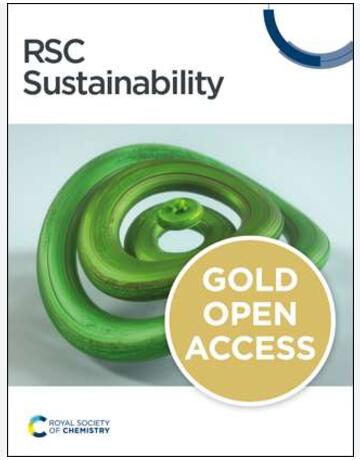透光混凝土中的聚甲基丙烯酸甲酯棒:可持续实施的关键调查
IF 3.3
3区 环境科学与生态学
Q2 ENVIRONMENTAL SCIENCES
引用次数: 0
摘要
通过使用回收材料、新技术和新工艺以及利用自然能源的材料,开发了以可持续性和节能为重点的特种混凝土。本文介绍了利用新型聚合透光介质聚甲基丙烯酸甲酯开发透光混凝土的一项研究成果,以及对所获成果的详细分析。根据棒的直径和数量研究了四种变体,在 100 毫米立方体样品中分别加入了直径为 5 毫米和 10 毫米的棒。棒材面积与透光率之间建立了正相关关系;不过,也观察到抗压和抗弯强度有所下降。季节和月度变化结果表明,夏季的透射率较高,五月份的透射率最高,而季风季节的透射率最低,特别是在七月份。此外,还介绍了应用该材料的案例研究结果。对施工成本进行了研究,并对运行期间的耗电量进行了预测。结果表明,即使初始成本较高,使用也是可行的。结果表明,各种方案都能在 7-31 年内收回投资。此外,在四种变体中,有三种变体在整个使用寿命期间不需要采光能源和电力消耗,从而大幅减少了二氧化碳的总排放量。变体在 7-31 年内就能收回投资。此外,在四个变体中,有三个变体在整个使用寿命期间不需要采光能源和电力消耗,从而大幅减少了二氧化碳的总排放量。本文章由计算机程序翻译,如有差异,请以英文原文为准。
Poly-Methyl-Methacrylate Rods in Light-Transmitting Concrete: A Critical Investigation into Sustainable Implementation
The development of special concrete focussed on sustainability and energy conservation has been approached through the use of recycled materials, novel techniques and processes, and materials that harness natural energy. This paper presents the results of one such study on the development of light-transmitting concrete using a novel polymeric transmitting media, poly-methyl-methacrylate, and a detailed analysis of the results obtained. Four variants based on the diameter and number of rods have been studied, with 5 and 10 mm diameter rods incorporated into 100 mm cube samples. A positive correlation between the area of rods and transmittance has been established; however, a loss in compressive and flexural strength was observed. Seasonal and monthly variation results indicate higher transmittance in summer, with the highest transmittance being observed in the month of May and the monsoon having the lowest transmittance, specifically in the month of July. The results of a case study of the application of the material have also been presented. The cost of construction has been studied, and the prediction of electricity consumption during operations has been carried out. The results have indicated the feasibility of use, even with the high initial cost. Variants have been shown to return the investments in a period of 7–31 years. Additionally, three of the four variants showed a sharp decrease in total CO2 emissions by eliminating the need for energy for daylighting and eliminating the consumption of electricity throughout the service life. Variants have been shown to return the investments in a period of 7–31 years. Additionally, three of the four variants show a sharp decrease in total CO2 emissions by eliminating the need for energy for daylighting and eliminating the consumption of electricity throughout the service life.
求助全文
通过发布文献求助,成功后即可免费获取论文全文。
去求助
来源期刊

Sustainability
ENVIRONMENTAL SCIENCES-ENVIRONMENTAL SCIENCES
CiteScore
6.80
自引率
20.50%
发文量
14120
审稿时长
17.72 days
期刊介绍:
Sustainability (ISSN 2071-1050) is an international and cross-disciplinary scholarly, open access journal of environmental, cultural, economic and social sustainability of human beings, which provides an advanced forum for studies related to sustainability and sustainable development. It publishes reviews, regular research papers, communications and short notes, and there is no restriction on the length of the papers. Our aim is to encourage scientists to publish their experimental and theoretical research relating to natural sciences, social sciences and humanities in as much detail as possible in order to promote scientific predictions and impact assessments of global change and development. Full experimental and methodical details must be provided so that the results can be reproduced.
 求助内容:
求助内容: 应助结果提醒方式:
应助结果提醒方式:


